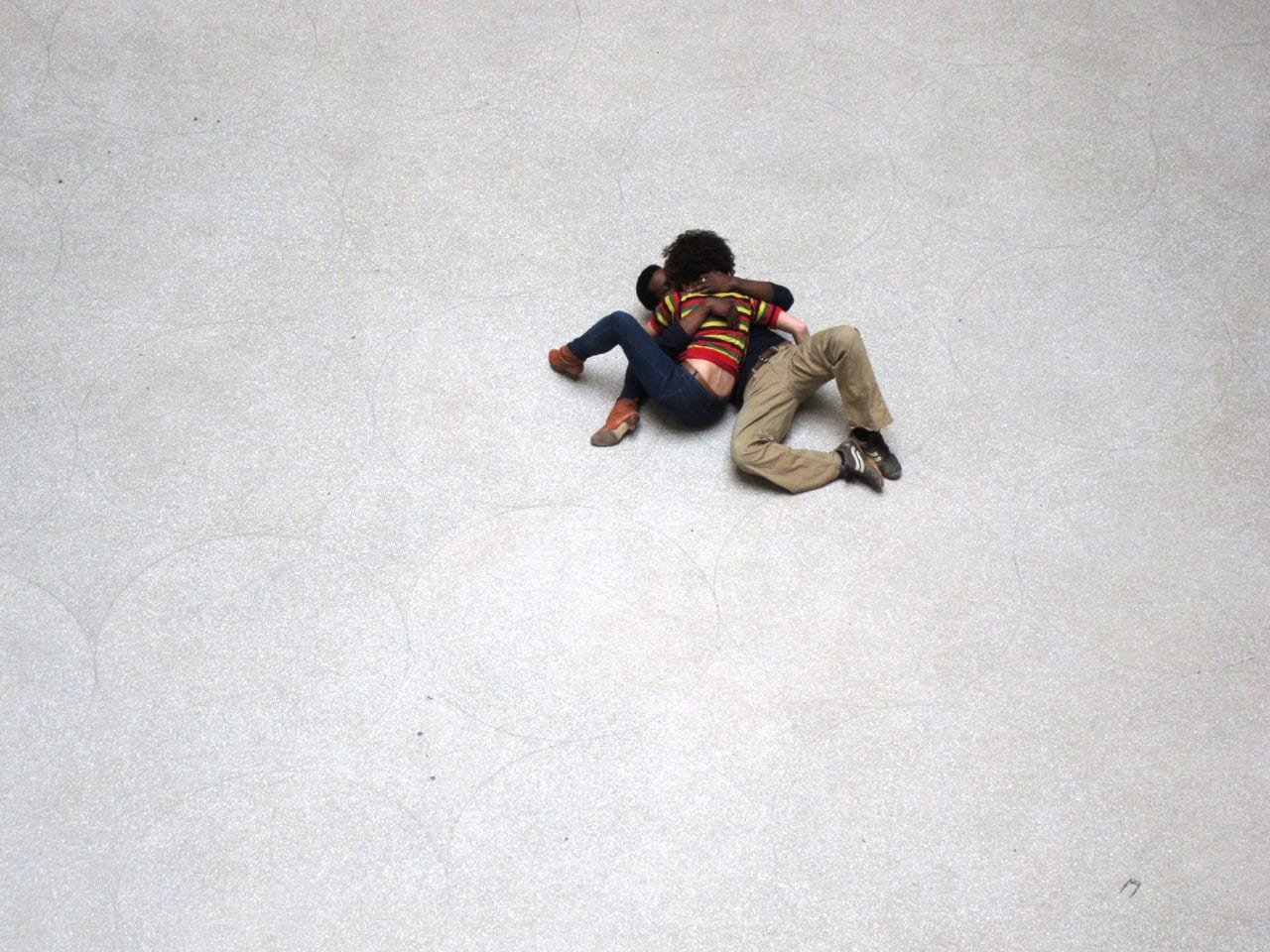On Tino Sehgal and the Aesthetic of the Immaterial
Spectators puzzle over Yet Untitled presented at the Venice Biennale in 2013. The performers sit on the floor and make sounds alluding to iconic and cultural songs (photo from oe1)
Entering the industrial enclave of the Hauprok Foundation in East Berlin — a prominent institution housing a preeminent collection of conceptual and minimal art — I imagined myself prepared for potentially weird art. Indeed, I encountered an array of fascinating oddities: an old, tattered carpet from a drug rehab center in Los Angeles; a performance depicting the ordinary moment of a toilet attendant absorbed in music and a crossword puzzle; and to keep Duchamp from rolling in his grave (or perhaps, to make him roll more violently), some ready-mades, including a crumpled pillow on a pedestal.
As I navigated the pale bustling gallery spaces, I observed arched brows and quiet whispers questioning the nature of the art. However, even my own suspension of disbelief faltered as I entered a room where a woman, appearing to be a museum guard, unexpectedly broke into song: “This is propaganda, you know, you know.”
As she sang the melody twice in a flawless high-pitched intonation, there was utter silence and great confusion. After finishing, she nonchalantly turned around, resuming her museum guard duties as if nothing had happened, disregarding the perplexed faces of the spectators.
Who is this mysterious museum guard? Was she just giving an impromptu performance, or could she be a deliberate part of the exhibition?
As it turned out, the latter was true, and I was lucky enough to witness one of the so-called Constructed Situations of Berlin-based artist Tino Sehgal, who emphatically avoids pigeonholing his creations as mere "performances". Indeed, Constructed Situations is an apt title for Sehgal’s art, encapsulating the essence of the encounters, where visitors are propelled into the artist’s situation without warning or any means of escape. His immersive approach blurs the traditional boundary between viewer and performer, or in Sehgal's own terminology, viewer and ‘interpreter’. In fact, that woman was not a museum guard seeking our applause for her musical disposition, but she meticulously followed Sehgal’s precise set of instructions and methods for her song and overall behavior.
After the exhibition I spoke to a few people and we agreed: it felt like the interpreter’s rendering of This is Propaganda disrupted the hallowed silence of the exhibition space in a provocative way, like a deliberate intrusion into the realm of individual boundaries and social norms. And if you look up other works by Tino Sehgal you will notice similar characteristics: during Kiss (2003) spectators are confronted with an intimate encounter between two interpreters who engage in acts of kissing and embraces alluding to famous artworks (such as Auguste Rodin’s bronze sculpture The Kiss). In Situation (2007) visitors are invited to participate in an ongoing philosophical dialogue sparked by a group of interpreters referencing statements from the history of political and social (sociopolitical?) thought. I describe these in the present tense because once a museum has acquired a Constructed Situation, it can display them over and over through an interpreter.
I confess to occasional feelings of aimlessness in museum visits and so appreciate the vigor of playing a conscious role and actively contributing to the development of an artwork. Even in major institutions such as New York's Guggenheim, Tate Modern, or the Palais de Tokyo.
Two interpreters performing Tino Sehgal’s The Kiss on the floor of the Guggenheim Museum in 2010 (photo from GCC)


